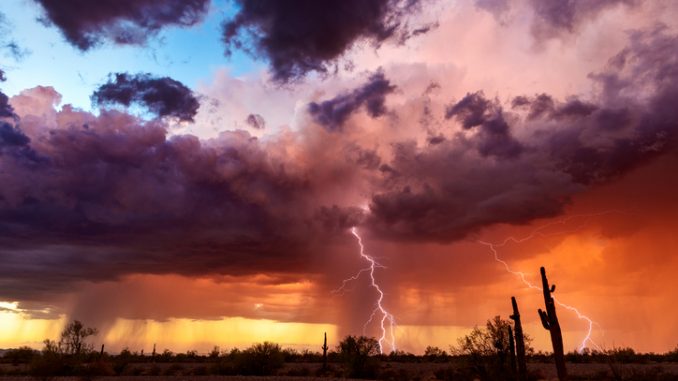
Every summer in Arizona there comes a time when the long summer days with their unrelenting 100+ degree temperatures become tiresome if not nearly unbearable.And even though it’s “a dry heat” and the lack of humidity makes 110 degrees feel like 90, by July, Arizonans are ready for a change when it comes to the weather. Every year it comes in the form of thunderstorms we call monsoons.
Depending on the time of the day, a monsoon can turn the sky dark blue or black or purple or red—the wind rushes through the trees and the water falls, bathing thirsty plants and bringing life to the parched earth. And oh, how it changes the scent of the desert! The strong and smoky smell of creosote, heavy and asphalty, hangs in the air like a cloth. Lightning and thunder are common, too, and the world outside feels different for anywhere between 10 minutes and a couple of hours. It is magnificent.
And then there’s the flip side. Flash floods are common, where dry creek beds swell and overflow closing streets and stranding people in their cars. Wind damages homes and old trees. Tornados can even form making traveling hazardous. Not to mention that adding that much moisture in a normally dry atmosphere increases the humidity to a much higher percentage than we are used to and we long for the dryness once again. And every year around the end of September dryness comes.
It’s rare that something is all good or all bad—mostly things are a combination—and sometimes, passing seasons can illuminate the distinction.
